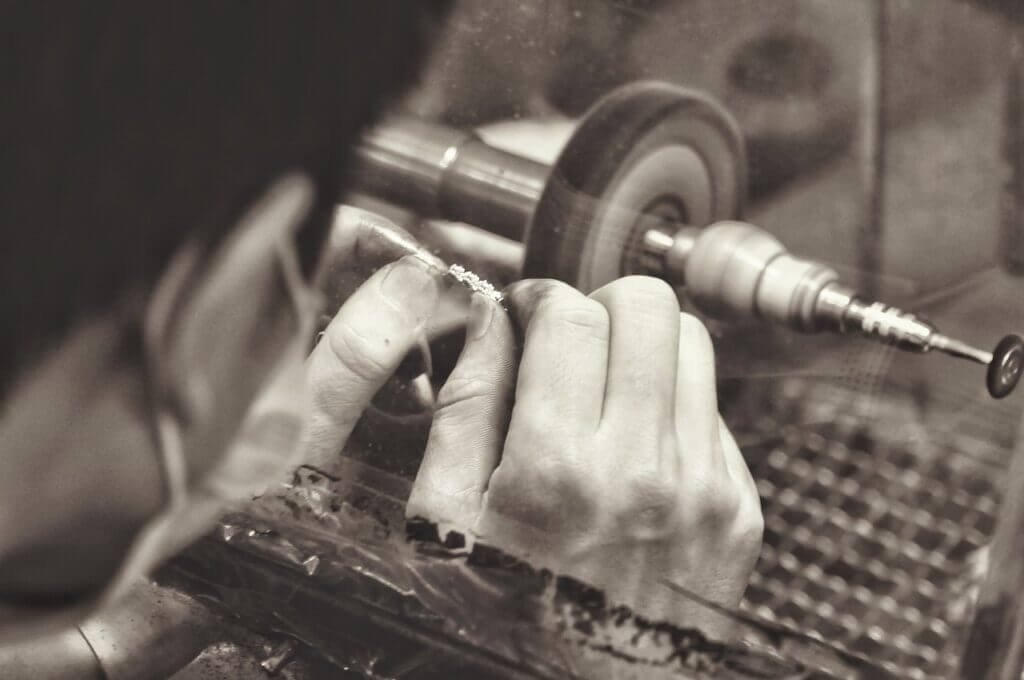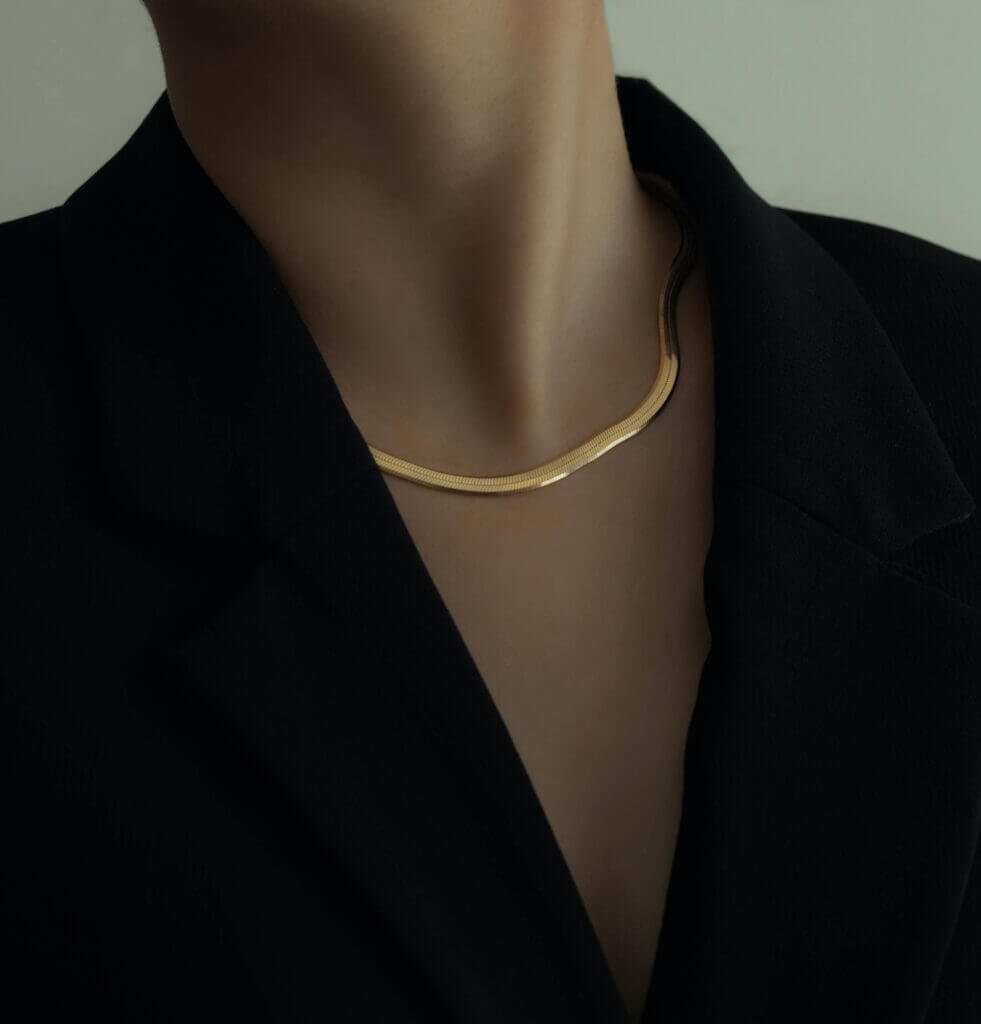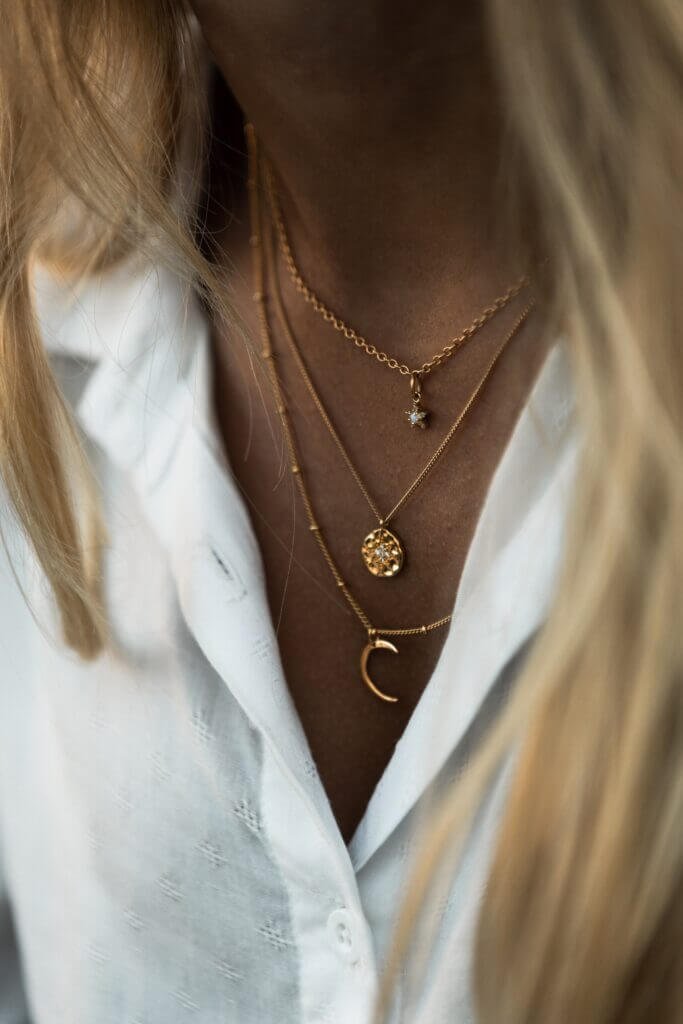What Are The Basic Techniques In Making Jewelry?
What Are The Basic Techniques In Making Jewelry? If you’ve ever wondered about the fascinating art of jewelry-making, you’re in for a treat. In this article, we will explore the world of crafting beautiful jewelry and uncover the basic techniques that make it all possible. From wire wrapping to bead stringing, you’ll discover the foundational skills that every jewelry enthusiast should know. So, grab your tools and get ready to embark on a creative journey as we unravel the secrets behind making stunning pieces of wearable art. Making jewelry is a creative and rewarding craft that allows you to express your personal style and create unique pieces for yourself or others. Whether you’re a novice or an experienced jewelry maker, it’s important to have knowledge of the basic techniques in making Jewelry involved in creating beautiful jewelry. In this comprehensive guide, we’ll explore the various materials and tools you’ll need, as well as the step-by-step processes for designing and crafting jewelry. So, let’s dive in and learn the art of jewelry making!

Choosing materials- Basic Techniques In Making Jewelry
Selection of metals
When it comes to jewelry making, choosing the right metals is crucial. It is one of the basic techniques in making Jewelry. Whether you prefer the lustrous shine of silver or the warm glow of gold, understanding the properties of different metals is essential. For instance, sterling silver is a popular choice for its affordability and durability, while gold offers a timeless elegance. Other options include copper, brass, and stainless steel, each with its own unique characteristics. Consider factors such as color, cost, and hypoallergenic properties when selecting metals for your jewelry projects.
Selection of gemstones
gemstones add a touch of color and sparkle to your jewelry designs. From classic diamonds to vibrant sapphires and emeralds, the choices are endless. When selecting gemstones, consider factors such as cut, color, clarity, and carat weight. Additionally, you may want to consider the gemstone’s symbolism and metaphysical properties, which can add a meaningful touch to your jewelry creations. Whether you choose natural gemstones or opt for lab-created alternatives, ensure they are securely set in your designs.
Selection of beads and charms
Beads and charms are versatile components that can be incorporated into various jewelry designs. From gemstone beads to glass beads and metal charms, the options are vast. Consider the size, shape, and color of beads that align with your design concept. Charms can be chosen based on theme, symbolism, or personal preference. Experiment with different combinations to create unique and eye-catching jewelry pieces.
Selection of wires and cords
Wires and cords play an essential role in jewelry making, providing structure and support to your designs. For wire wrapping and metalworking techniques, choose a gauge that suits the intended purpose. Thicker gauges offer strength and stability for shaping and forming metal, while thinner gauges are perfect for delicate wire wrapping. Cords, such as leather, silk, or nylon, are used for stringing beads and creating adjustable closures. Consider the desired look and feel of your finished piece when selecting wires and cords.
Designing jewelry
Creating a concept
Before diving into the actual construction of your jewelry piece, it’s important to have a clear concept in mind. Consider the style, theme, and intended wearers of your jewelry. This will help guide your design choices and ensure a cohesive and harmonious result. Take inspiration from nature, art, fashion trends, or personal experiences to create a concept that resonates with you.
Sketching the design
Once you have a concept in mind, sketching your design is an excellent way to visualize your ideas. It doesn’t have to be a work of art; just a rough outline that captures the essence of your design. Sketching helps you map out the placement of gemstones, beads, or charms, as well as the overall shape and structure of your jewelry piece. Use it as a reference throughout the crafting process.
Using online design tools
If you prefer a digital approach, there are numerous online design tools available to help you create and manipulate your jewelry designs. These tools often offer pre-set jewelry templates, customizable features, and the ability to experiment with different materials and colors. They can be a great resource for exploring design possibilities and refining your vision.
Considering functionality and comfort
While aesthetics are important, it’s crucial to consider the functionality and comfort of your finished jewelry piece. Think about factors such as weight, size, and ease of use. For example, if you’re creating a bracelet, ensure it fits comfortably around the wrist and has a secure closure. Take into account the practicality of your design to ensure it can be enjoyed and worn with ease.

Metalworking: Basic Techniques In Making Jewelry
Cutting and shaping metal
metalworking techniques are foundational skills for jewelry making. Cutting and shaping metal involve using various tools such as saws, shears, files, and hammers. Practice precision when cutting metal sheets or wires to achieve clean and accurate edges. Similarly, shaping metal requires the use of pliers, mandrels, and forming tools to create desired curves, angles, or embossments. Take your time and work carefully to bring your metalwork designs to life.
Soldering
Soldering is a basic techniques in making Jewelry used to join metal components together. It involves using a soldering torch or iron to heat a filler metal (solder) that melts and wicks into the joint, creating a strong bond. Soldering allows you to connect jump rings, attach clasps, and create complex designs with multiple metal parts. Practice safety precautions and follow proper soldering techniques to ensure a secure and professional result.
Texturing metal
Adding texture to metal brings depth and visual interest to your jewelry designs. There are various techniques to texture metal, such as hammering, stamping, or using specialized texturing hammers and rolling mills. Experiment with different patterns and textures to achieve your desired effect. Texturing can be applied to flat surfaces or curved forms, allowing you to create unique and artistic jewelry pieces.
Forming metal into desired shapes
Forming metal into desired shapes is an essential skill for jewelry making. This technique involves using tools like mandrels, dapping blocks, or ring mandrels to bend and shape metal wires or sheets. By using different shaping techniques, you can create rings, bracelets, earrings, and more. Take your time and check for symmetry and proper fitting throughout the shaping process.
Stone setting techniques
Prong setting
Prong setting is a popular technique for securing gemstones in jewelry. It involves creating metal claws or prongs that hold the stone in place. Prong settings allow maximum light exposure to the gemstone, enhancing its brilliance and sparkle. Practice precision when forming prongs, ensuring they are even and securely grip the stone.
Bezel setting
Bezel setting involves encasing a gemstone with a metal strip to secure it in place. This technique offers a sleek and contemporary look, as well as added protection for the stone. Bezel settings can be full or partial, depending on the design and desired effect. Take care to create even and smooth bezels that securely hold the gemstone.
Channel setting
Channel setting involves placing gemstones in a continuous groove or channel within the metal. This technique is commonly used for creating eternity bands or accent stones in larger jewelry pieces. It requires precise measurements and careful alignment of the gemstones to ensure a seamless and uniform appearance.
Pavé setting
Pavé setting involves closely setting small gemstones together, creating a paved or cobblestone-like effect. This technique is commonly used to add sparkle and texture to jewelry designs. It requires careful placement and setting of each individual stone to achieve a seamless and dazzling result.
Flush setting
Flush setting, also known as gypsy setting, involves embedding gemstones into a metal surface, leaving only the table (top) of the stone exposed. This technique creates a smooth and sleek finish, with the gemstones set flush against the metal. Precision and attention to detail are crucial to achieve a clean and professional flush setting.

Wire wrapping
Basic wire wrapping
Wire wrapping is a versatile technique that involves using wire to create intricate designs and secure beads or gemstones. Basic wire wrapping techniques include creating loops, bails, or spirals to connect components together. Practice various wrapping techniques, such as simple loops and wrapped loops, to add interest and visual appeal to your jewelry designs.
Wire wrapping beads
wire wrapping beads allows you to showcase their beauty while securely attaching them to your jewelry piece. By creating wire-wrapped loops or cages around the beads, you can transform them into pendants, charms, or elements within your design. Experiment with different wire gauges and wrapping styles to achieve different effects.
Creating wire loops
Wire loops are an essential component in jewelry making. They are used to attach clasps, create dangles, or connect different components together. Practice forming consistent and secure wire loops using round nose pliers. Consider the size and placement of the loops to ensure they fit seamlessly into your overall design.
Wire weaving
Wire weaving is an advanced wirework technique that involves intertwining wires to create intricate patterns or designs. This technique adds decorative elements and visual interest to your jewelry pieces. Practice weaving wires together using various weaving techniques and patterns to develop your wire weaving skills.
Stringing beads and charms: Basic Techniques In Making Jewelry
Choosing the right thread or cord
When stringing beads and charms, it’s important to choose the right thread or cord to ensure durability and longevity. Consider factors such as the weight of your beads, the desired flexibility of the design, and the type of beads or charms you’re working with. Options include silk thread, nylon cord, leather, or specialized bead stringing wire. Choose a thread or cord that complements the overall design and provides sufficient strength.
Using different stringing- basic techniques in making Jewelry
Stringing techniques vary depending on the design and desired effect. Basic techniques include single strand, double strand, or multi-strand stringing. Experiment with different bead arrangements and spacing to create unique patterns and designs. Incorporate techniques such as knotting, crimping, or using bead caps to add structure and interest to your stringing projects.
Adding clasps and closures
Clasps and closures play an important role in jewelry making, providing a secure and convenient way to fasten your jewelry piece. Choose clasps that fit your design style and functionality requirements. Options range from lobster clasps and spring rings to toggle clasps and magnetic closures. Ensure your chosen closure complements the overall design and is easy to use.
Creating patterns and arrangements
Stringing beads and charms allows you to create patterns and arrangements that reflect your personal style. Experiment with color combinations, bead sizes, and textures to achieve different effects. Incorporate spacer beads, focal beads, or charms strategically to add interest and balance to your designs. Take your time to create patterns that are visually appealing and cohesive.

Textile techniques
Macramé
Macramé is a textile technique that involves knotting cords together to create decorative patterns or designs. This technique offers versatility in creating bracelets, necklaces, or even earrings. Learn different macramé knots, such as square knots, half-hitch knots, or spiral knots, to expand your macramé repertoire.
Knotting
Knotting is a basic textile technique used to secure beads or pearls. It involves tying knots between each bead to create spacing and prevent them from rubbing against each other. Consider using knotting techniques to create elegant and classic designs, such as pearl necklaces or knotted gemstone bracelets.
Braiding
Braiding is a popular textile technique that involves weaving multiple strands of cord, fiber, or wire together to create a cohesive and decorative design. Different braiding techniques, such as flat braids, spiral braids, or kumihimo braids, offer endless possibilities for incorporating texture and color into your jewelry pieces.
Crocheting
Crocheting allows you to create intricate and delicate jewelry pieces using a hook and thread or yarn. This technique offers opportunities for incorporating beads, charms, or even wire into your crochet designs. Explore different crochet stitches, such as single stitch or double stitch, to create unique and eye-catching jewelry items.
Creating chains
Basic chain making
Creating chains is a fundamental skill in jewelry making. Basic chain making involves linking individual jump rings together in various patterns to form a chain. This technique allows you to create necklaces, bracelets, or anklets of different lengths and styles. Practice opening and closing jump rings securely to achieve a clean and professional chain.
Chain maille
Chain maille is an advanced chain making technique that involves weaving individual rings together in intricate patterns. This technique is reminiscent of medieval armor and provides an opportunity to create statement jewelry pieces. Explore different chain maille weaves, such as Byzantine, European 4-in-1, or Persian, to develop your chain maille skills.
Box chain
Box chain is a classic chain design characterized by square-shaped links that interlock in a specific pattern. This chain design offers strength and durability, making it suitable for bracelets or anklets. Practice linking the individual box links securely to create a polished and seamless box chain.
Beaded chains
Beaded chains combine the beauty of beads with the functionality of chain making. This technique involves threading beads onto individual jump rings or wire segments and then linking them together to form a chain. Experiment with different bead sizes, colors, and arrangements to create eye-catching and personalized beaded chains.

Resin and clay techniques: basic techniques in making Jewelry
Using resin and molds
Resin is a versatile material that can be used to create unique and translucent jewelry pieces. By using molds, you can pour resin into different shapes and sizes, allowing you to craft pendants, beads, or even entire jewelry components. Follow safety precautions and instructions when working with resin, ensuring proper curing and finishing of your resin jewelry. It is one of the basic techniques in making Jewelry.
Creating resin jewelry
Resin jewelry offers endless possibilities for creativity. From embedding small trinkets or flowers to layering different colors to create depth, resin jewelry can be personalized and one-of-a-kind. Experiment with different techniques, such as doming, embedding, or marbling, to create stunning resin jewelry pieces.
Polymer clay techniques
Polymer clay is a versatile and easy-to-use material that can be shaped and baked to create durable and vibrant jewelry pieces. This technique involves conditioning the clay, shaping it into desired forms, and then baking it to harden. Explore different polymer clay techniques, such as caning, millefiori, or sculpting, to bring your clay jewelry designs to life.
Creating clay beads and pendants
Clay beads and pendants offer a unique and handmade touch to your jewelry designs. Roll and shape polymer clay into desired bead or pendant forms, and then bake them according to instructions. Experiment with different colors, textures, and finishes to create clay beads and pendants that suit your design style.
Finishing touches: Basic Techniques In Making Jewelry
Polishing and buffing
Polishing and buffing are essential steps in finishing your jewelry pieces, providing a smooth and shiny surface. This is one of the basic techniques in making Jewelry. Use polishing compounds, cloths, or rotary tools with buffing attachments to achieve a high gloss finish. Practice patience and care when polishing, ensuring all surfaces are evenly polished.
Applying patina or oxidization
Applying patina or oxidization to metal surfaces can create an aged or antiqued appearance, adding depth and character to your jewelry designs. This technique involves using chemical solutions or liver of sulfur to darken metal surfaces selectively. Experiment with different patina applications and techniques to achieve desired effects.
Creating textures and finishes
Creating textures and finishes adds visual interest and enhances the overall design of your jewelry pieces. Techniques such as hammering, filing, or applying texture plates can create unique patterns and designs on metal surfaces. Additionally, consider adding finishes such as satin, matte, or high polish to achieve different effects and complement your design.
Adding final embellishments and details
Adding final embellishments and details can elevate your jewelry design to the next level. Consider incorporating elements such as Swarovski crystals, pearls, or tiny charms to add sparkle and charm. Be mindful of the overall balance and scale, ensuring your embellishments enhance the design rather than overpower it.
Congratulations! You’ve now learned about the various basic techniques involved in making jewelry. From selecting materials to mastering metalworking, stone setting, wire wrapping, stringing, textile techniques, chain making, resin and clay, and finishing touches, you have the knowledge and tools to create stunning jewelry pieces. Remember to practice, experiment, and let your creativity soar as you embark on your jewelry making journey. Now you know the basic techniques in making Jewelry. Happy crafting!



